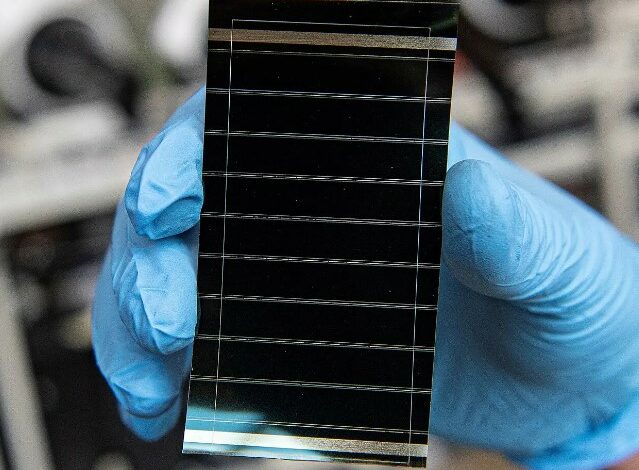Aluminum ink improves photovoltaic efficiency in perovskite

Stabilized the photovoltaic efficiency in perovskite p-i-n
The photovoltaic efficiency in perovskite has finally reached that of crystalline silicon, however the mass production still collides with several stability problems. For this technology, in recent years the inverted architecture or p-i-n architecture has emerged as the most promising configuration. Why? Because it allows the use of organic layers of transport of gaps or self-assembling monolayers that can be processed at low temperature, which therefore ensure compatibility with the processing via roll-to-roll printing. Proving extremely useful for new tandem architectures. However, the devices incorporating these interstates fail to fix the perovskite precursor well. This leads to the formation of very small holes and consequently to a reduction in yield.
The “nano-ink” of the ATI
To overcome the problem a group of researchers from the Advanced Technology Institute (ATI), at the University of Surrey, created a special coating. “In the past, metal oxides have been shown to improve or degrade the performance of solar cells to perovskite,” explains Hashini Perera, the main author of the study. “We found that aluminum oxide can improve performance and minimize the drop in efficiency when conditioning perovskite solar cells”.
In detail, the group used a kind of nanoscale ink of aluminium oxide. Alumina nanoparticles act as fixing sites for the precursor of perovskite on the organic layer, avoiding the formation of holes. And in this way it is possible to stabilize the decrease in efficiency of photovoltaic in perovskite. “We have shown that this nano-oxide allows a uniform coating of perovskites on highly promising organic molecules that self-assemble,” Perera added. The research was published in the journal Solar RRL.





